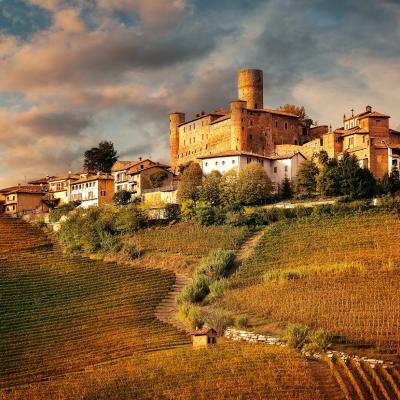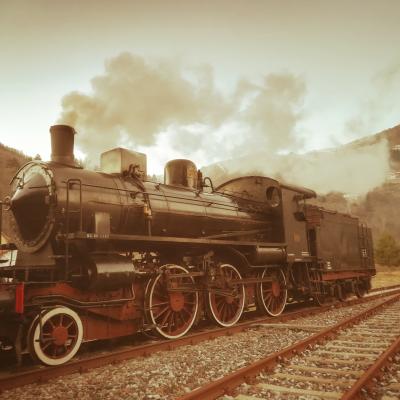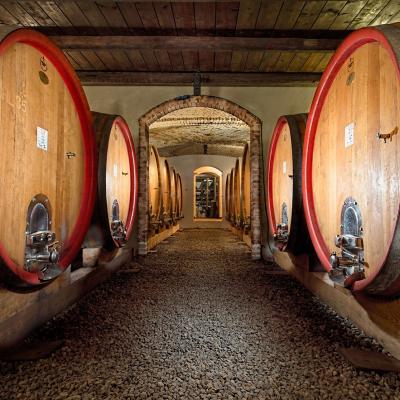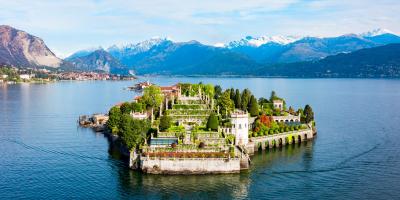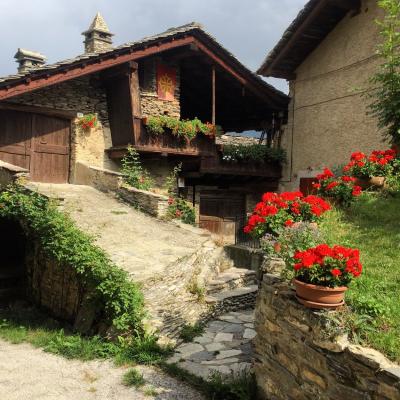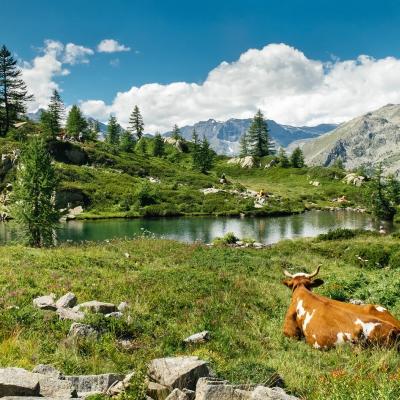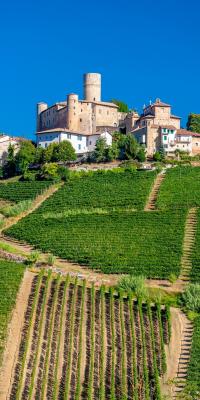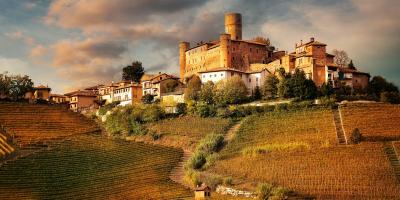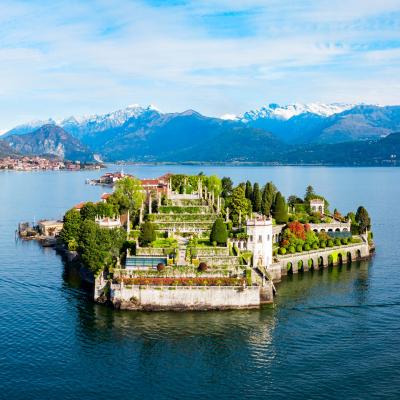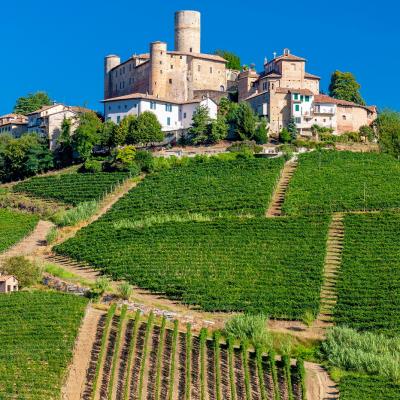Piedmont
As its name implies,Piedmont is the land of the mountains ("at the foot of the mountains"): in fact, it is surrounded on three sides by the Alpine chain, which right here includes the highest peaks and largest glaciers in Italy. Italy's second-largest region, it is strongly rooted in tradition and tenaciously clinging to innovation, with its polytechnic, aerospace studies and component design for the European Space Agency. In the east, Vercelli and its rice fields are the beating heart of an agricultural economy that has made history in Italy. In the north, Biella is the center of excellence for yarns and is rediscovering itself as a destination for young tourism, thanks to its health trails that allow long hikes among refuges and meadows on the slopes of the Alps. The lower Piedmont of the Langhe Roero, an area between the Ligurian Apennines, the Maritime Alps and Monferrato: "The Vineyard Landscapes of Piedmont: Langhe-Roero and Monferrato
What to see and what to do
Turin, the first Capital of Italy, is the quintessential industrial city of Italian history, with its monumental arcades and archaeological areas. The Mole Antonelliana is the symbol of the city and houses the Cinema Museum, the Royal Palace and the Cathedral of St. John the Baptist, where the Holy Shroud is kept. Not to be missed is the Egyptian Museum, second only to the one in Cairo and among the most important in the world. Splendid is the Reggia della Venaria Reale, an architectural complex of extreme charm, recognized by UNESCO along with the other Royal Residences of the Savoy family. Masterpieces of religious architecture are the Sacri Monti, richly decorated places of devotion, spread over the entire region: at Varallo Sesia, Serralunga di Crea and Ponzano Monferrato, Orta San Giulio, Ghiffa, and Domodossola.The Piedmont shore of Lake Maggiore is dense with renowned resorts, such as Arona with its 17th-century colossal statue of St. Charles, Stresa and the Borromean Islands, rich with villas and gardens. Not to be missed is a visit to the Island of San Giulio, on the shores of Lake Orta, about 400 meters from the town and reachable by boat. The small town of Orta San Giulio has a picturesque historic center characterized by relaxing alleys and squares.
Piedmont was the host of the Winter Olympics in 2006, as it constitutes one of the most important winter sports track systems in Europe. It features some of the most beautiful ski resorts throughout the Alps, from Limone Piemonte, to Pragelato, to Sauze d'Oulx, to Sestriere, to Bardonecchia. There are many sports that can be practiced: cross-country skiing, ice skating, snowboarding, rock climbing, rafting in raging torrents, trekking in the mountains around Verbania, mountain biking along the banks of the Sesia, golf in several centers throughout the area, and also sailing, windsurfing, and canoeing at Lake Maggiore. There are also many nature reserves and parks, especially the Gran Paradiso National Park, which is home to glaciers, natural lakes and protected flora and fauna.
What to eat
Piedmont offers a rich variety of typical products, a noble and strongly characterized culinary tradition. These include breadsticks, rice and related risottos, braised meat, and the renowned white truffle of Alba. The most characteristic specialties of the regional cuisine are fondue and bagna cauda: gravies that enhance the use of Alba truffles and that of raw vegetables. Cured meats and meat dishes include doja (sausage covered with melted lard), bresaola d'Ossola, tapulon (fine stew of donkey meat) typical of the Novara area, and liver mortadella known as fidighin, topped with Barbera brulè and mashed potatoes. Piedmontese dairy production includes tomino made from cow's milk and is prepared with endless variations throughout the territory, tumet made from skimmed and rindless cow's milk, gorgonzola from Novara, the famous PDO robiole and Bra PDO.
Chocolate is at home in Piedmont: with a production of 85,000 tons, Turin is Italy's largest center for chocolate processing. In this region we find characteristic sweets for each city, such as gianduiotti made with hazelnuts from the Langhe, cookies from Novara, krumiri from Casale, nougat from Alba, baci di dama from Alessandria, amaretti biscuits in Novi, and margheritine from Stresa. A choice of wines of the highest quality, with 80 percent of production being DOC and DOCG only, as well as the record in the number of DOCG wines in Italy. The well-deserving Slow Food association was born here. Classic regions of excellence are Monferrato, Langhe and Roero, and some of the finest red wines are: Barolo, Barbaresco, Gattinara, Ghemme, Nebbiolo, Freisa, Grignolino, Barbera, Dolcetto.
Alba, Langhe and Roero
The Langhe and Roero are the most visited hill system in northwestern Italy. Close to Turin, one of the world capitals of the automobile and a major player in sports, the hills that stretch around the catchment area of the Tanaro River are unmissable for those who want to discover the secrets of the Italian-style "dolce vita," where clamor and confusion are banished to rediscover rhythms of life on a human scale. The Langhe is a historic region of Piedmont located straddling the provinces of Cuneo and Asti, bordering other historic regions of Piedmont, namely Monferrato and Roero and consisting of an extensive hill system defined by the course of the Tanaro, Belbo, Bormida di Millesimo and Bormida di Spigno rivers. In June 2014, the hilly landscapes of Langhe and Roero became part of the UNESCO World Heritage Site. The nomination of Piedmont's Vineyard Landscapes was accepted by the Standing Committee on Unesco's Material Heritage meeting in Doha, Qatar.
According to Unesco, Piedmont's vineyards are an outstanding example of man's interaction with his natural environment: thanks to a long and constant evolution of techniques and knowledge about viticulture, the best possible adaptation of vines to the characteristics of the soil and climate has been achieved, so much so that they have become an international reference point. The wine-growing landscapes of Langhe-Roero and Monferrato embody the archetypal European wine-growing landscape because of their great aesthetic quality. Attention also goes to the excellence represented by Piedmontese wines. Close to Turin, the hills that stretch around the catchment area of the Tanaro River are unmissable for those who want to discover the secrets of the Italian-style "dolce vita," where clamor and confusion are banished to rediscover rhythms of life on a human scale.
An area where customs and traditions are influenced by neighboring France and where one can admire numerous testimonies that history has left over the years in these lands of passage, halfway between the sea of Liguria and the cities of the most economically developed part of the country.
The city of Alba, considered the capital of the Langhe, a hilly region in the northeast of the province of Cuneo, is surrounded by harmonious vineyards from which some of Italy's best-known and finest wines are produced: Barolo, Barbaresco, Barbera, Dolcetto and Moscato d'Asti.
The town center has its hub in Via Vittorio Emanuele, better known as Via Maestra, a true boutique of typical and prestigious products, which has always been a meeting point for the people of Alba and tourists.
In the restaurants of the city and surrounding hills you can taste recipes that combine elegance and tradition, enriched in autumn by the famous Alba white truffle flakes, the well-known Tuber Magnatum Pico. The National White Truffle of Alba Fair, established back in 1928, celebrates this mysterious quality product every autumn.
The Truffle Fair
The International Alba White Truffle Fair is the world's largest exhibition of truffles from the Piedmont hills of Langhe, Roero and Monferrato.
The centerpiece of the event is the Alba White Truffle World Market where, in addition to the prized truffles, it is possible to taste and buy the area's gastronomic specialties, such as wines, liqueurs, cheeses, pastas, cured meats, sweets, chocolate, mushrooms and, of course, the famous Piedmont Hazelnuts and Cuneo Chestnuts, both of which have the PGI mark.
An area inside the market is also set up for catering and wine tasting of Langhe and Roero wines.
During the weekends, meetings with world-renowned chefs, tastings, tasting courses and thematic meetings for "Alba Truffle Show," the container of gourmet events hosted in the Cortile della Maddalena, home of the Market.
Fenoglio and Pavese
Langs and resistance. These are the two poles around which Beppe Fenoglio's narrative unfolds. He tells of a harsh reality in the face of which each individual reveals his true nature, giving rise to a variety of characters. We meet the weak, the defeated, the victims and the strong, cunning, devious, rapacious, whose humanity is corroded by the will to survive.
Beppe Fenoglio's work is that of the partisan war fought between 1943 and 1945. Experience that nourished his novels, think of Partisan Johnny or A Private Matter, considered among the most important of Italian Resistance literature.
In Cesare Pavese's production, the theme of childhood lived in the landscape of the Langhe is constantly re-proposed, where the harsh countryside, marked by toil and misery, is nevertheless rich in a vital tension that manifests itself, in the necessary opposites of birth and death, with the recurring symbols of sex and blood. In his most significant novel, The Moon and the Bonfires, the protagonist, back in the Langhe after many years in America, soon realizes that only the places have remained the same, not the people and situations. The novel's language uses everyday words, a syntax marked by the forms of dialect and speech, which communicate to the reader the struggle to move from an intensely experienced but naive reality to a more conscious need to understand.
